Figure Matrix | CSAT Preparation - UPSC PDF Download
Introduction
- Figure Matrix questions consist of a set of diagrams or figures arranged in a rectangular matrix. The matrix structure is formed by organizing the diagrams in this manner.
- Each diagram within the figure matrix adheres to a specific rule.
- Your task is to discern this rule and make appropriate decisions based on this understanding.
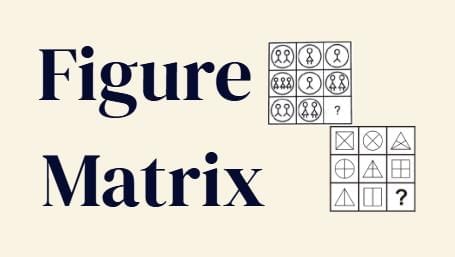
Figure Matrix
- In this type of question, multiple sets of figures are presented in the form of a matrix, and all of them follow the same rule. The task for the candidate is to analyze the complete sets, identify the common rule, and then use this rule to determine the missing figure in an incomplete set.
- Non-verbal reasoning heavily relies on assessing a student's ability to recognize patterns and relationships among shapes and symbols based on a rule.
- For instance, in a number series, several numbers are interconnected through a rule. Similarly, in figure matrix questions, each element is linked through a rule.
Let's solve some examples to better understand this concept.
Examples:
Example 1: In the following question, find out which of the answer figures (a), (b), (c) and (d) completes the figure matrix?
Problem Figure:
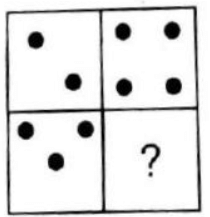
Answer Figures:
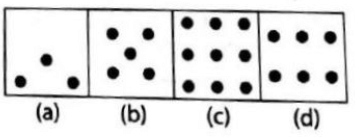 A. (a)
A. (a)
B. (b)
C. (c)
D. (d)
Ans: D
Explanation: Clearly, in the upper row, the number of dots in the second is twice the number of dots in the first figure.
Similarly, in the lower row, the number of dots in the second figure must be twice the number of dots in the lower first figure.
So, the number of dots in the missing segment is = 2×3 = 6.
Thus the correct answer is D.
Example 2: In the following question, find out which of the answer figures (a), (b), (c) and (d) completes the figure matrix?
Problem Figure: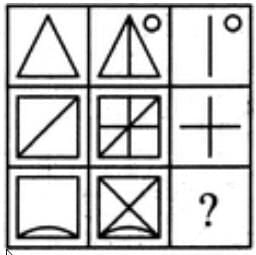
Answer figures: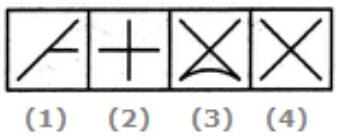
A. (a)
B. (b)
C. (c)
D. (d)
Ans: B
Explanation: The third figure in each row comprises of parts which are not common to the first two figures.
The diagonals are not common in third row, hence option d is correct.
Example 3: In the following question, find out which of the answer figures (a), (b), (c) and (d) completes the figure matrix?
Problem Figure: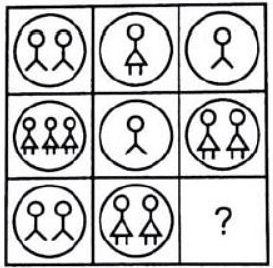
Answer Figures: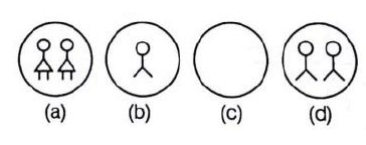 A. (a)
A. (a)
B. (b)
C. (c)
D. (d)
Ans: C
Explanation: Clearly, in each row, the number of elements in the third figure is equal to the difference in the number of elements in the first and second figures.
Also, the third figure has the same types of elements as that of the first figure.
Therefore, the answer is clearly C.
Example 4: In the following question, find out which of the answer figures (a), (b), (c) and (d) completes the figure matrix?
Problem Figure: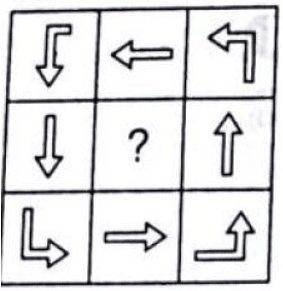
Answer Figures: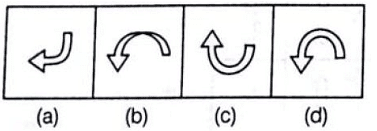 A. (a)
A. (a)
B. (b)
C. (c)
D. (d)
Ans: D
Explanation: In the question figure, all the arrows are headed in the same direction.
They are all pointing in an anticlockwise direction.
So the answer can either be (b) or (d). In (b), the shape of the arrow is unnecessarily peculiar.
Hence the only shape that fits the matrix will be D. (d).
Example 5: In the following question, find out which of the answer figures (a), (b), (c) and (d) completes the figure matrix?
Problem Figure: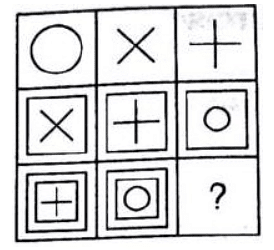 Answer Figures:
Answer Figures: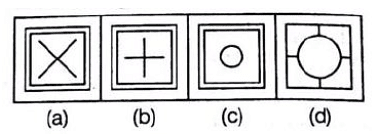 A. (a)
A. (a)
B. (b)
C. (c)
D. (d)
Ans: A
Explanation:
1. The border count rises each row
Row 1: no frame
Row 2: single square border
Row 3: double square border
2. Symbols cycle left by one column each row
Row 1 (no frame): ○ , × , +
Row 2 (1-frame): × , + , ○ (shift left)
Row 3 (2-frames): + , ○ , × (shift left again)
So the missing cell at (Row 3, Col 3) must be the symbol “×” (from the Row 1, Col 2 original) with a double square frame. Among the choices, the only one showing an X inside a square is (a).
Example 5: In the following question, find out which of the answer figures (a), (b), (c) and (d) completes the figure matrix?
Problem Figure: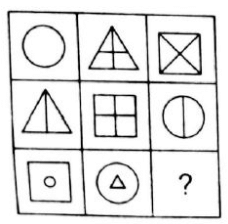 Answer Figures:
Answer Figures:
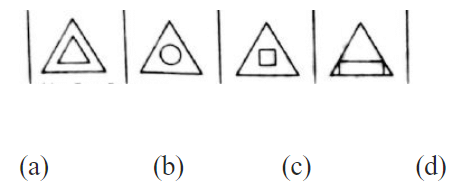
A. (a)
B. (b)
C. (c)
D. (d)
Ans: C
Explanation:
1. Outer shape cycles across each row and down each column in the order
Circle → Triangle → Square.
Row 1: Circle, Triangle, Square
Row 2: Triangle, Square, Circle
Row 3: Square, Circle, Triangle ⊳ so the missing cell must have a triangle outline.
2. Inner “mini‐shape” also cycles Circle → Triangle → Square, but in the other direction:
In row 3 we see at (3,1) a small circle inside a square; at (3,2) a small triangle inside a circle;
thus at (3,3) we should have a small square inside our triangle.
Putting those together, the blank must be a triangle outline containing a tiny square. That is choice (c).
|
205 videos|264 docs|136 tests
|
FAQs on Figure Matrix - CSAT Preparation - UPSC
| 1. What is the significance of the Figure Matrix in data representation? |  |
| 2. How can the Figure Matrix be applied in various fields? |  |
| 3. What are the key components of a Figure Matrix? |  |
| 4. What are common challenges faced when using a Figure Matrix? |  |
| 5. How does one create an effective Figure Matrix? |  |





















